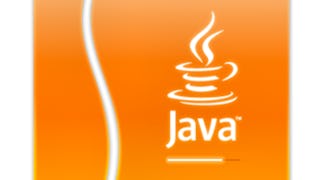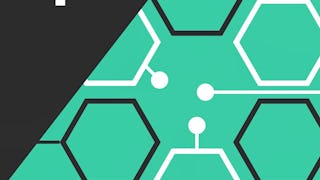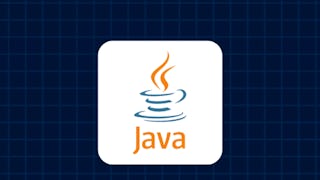Résolvez des problèmes réels avec Java en utilisant plusieurs classes. Apprendre à créer des solutions de programmation évolutives à l'aide d'interfaces Java. Reconnaître que le génie logiciel ne se limite pas à l'écriture de code - il implique également la pensée logique et la conception. A la fin de ce cours, vous aurez écrit un programme qui analyse et trie les données d'un tremblement de terre, et développé un générateur de texte prédictif. A l'issue de ce cours, vous serez capable de : 1. Utiliser le tri de manière appropriée dans la résolution de problèmes ; 2. Développer des classes qui implémentent l'interface Comparable ; 3. Utiliser les données temporelles pour analyser les performances empiriques ; 4. Décomposer les problèmes en plusieurs classes, chacune avec ses propres méthodes ; 5. Déterminer si une classe de l'API Java peut être utilisée pour résoudre un problème particulier ; 6. Mettre en œuvre des solutions de programmation en utilisant plusieurs approches et reconnaître les compromis ; 7. Utiliser les concepts orientés objet, y compris les interfaces et les classes abstraites, lors du développement de programmes ; 8. Masquer de manière appropriée les décisions d'implémentation afin qu'elles ne soient pas visibles dans les méthodes publiques ; et 9. Reconnaître les limites des algorithmes et des programmes Java dans la résolution des problèmes. 10. Reconnaître les classes Java standard et les idiomes, y compris la gestion des exceptions, les méthodes statiques, les paquets java.net et java.io.

Fin dans 3 jours. Donnez un coup de fouet à votre carrière en bénéficiant de 40 % de réduction sur les cours d'Adobe, d'IBM et d'autres. Économisez maintenant.


Programmation Java : Principes de conception de logiciels
Ce cours fait partie de Spécialisation Programmation Java et principes fondamentaux du génie logiciel
Enseigné en Français (doublage IA)



Instructeurs : Robert Duvall
109 690 déjà inscrits
Inclus avec 
(1,487 avis)
Compétences que vous acquerrez
- Catégorie : Principes de programmation
- Catégorie : Débogage
- Catégorie : Interface de programmation d'application (API)
- Catégorie : structures de données
- Catégorie : Algorithmes
- Catégorie : Programmation Informatique
- Catégorie : Génie logiciel
- Catégorie : Programmation Java
- Catégorie : Programmation orientée objet (POO)
- Catégorie : Conception de logiciels
- Catégorie : Tests de performance
- Catégorie : Java
- Catégorie : Modélisation prédictive
Détails à connaître

Ajouter à votre profil LinkedIn
12 devoirs
Découvrez comment les employés des entreprises prestigieuses maîtrisent des compétences recherchées

Élaborez votre expertise du sujet
- Apprenez de nouveaux concepts auprès d'experts du secteur
- Acquérez une compréhension de base d'un sujet ou d'un outil
- Développez des compétences professionnelles avec des projets pratiques
- Obtenez un certificat professionnel partageable

Il y a 5 modules dans ce cours
Bienvenue à "Programmation Java : Principes de conception de logiciels" ! Nous sommes ravis que vous commenciez notre cours pour apprendre à écrire des programmes en Java, l'un des langages de programmation les plus populaires au monde. Dans ce module d'introduction, vous aurez une vue d'ensemble de ce cours et vous découvrirez les ressources disponibles.
Inclus
1 vidéo2 lectures
Dans ce module, nous vous présenterons un ensemble de données contenant des détails sur les tremblements de terre dans le monde. Vous apprendrez à intégrer ces données dans un programme, à effectuer des recherches dans les données et à les filtrer en fonction des critères souhaités. À la fin de ce module, vous serez en mesure (1) d'écrire des programmes qui incluent plusieurs classes et des listes de types de classes, (2) de trouver la valeur maximale dans une liste de types, (3) d'utiliser une interface Filter pour rechercher des données, (4) d'implémenter des interfaces avec des signatures de méthodes, et (5) de combiner plusieurs filtres ensemble.
Inclus
11 vidéos4 lectures3 devoirs
Dans ce module, vous continuerez à utiliser des données réelles de tremblements de terre pour explorer plusieurs algorithmes de tri. Vous apprendrez à mettre en œuvre un tri par sélection et un tri par bulle, puis vous découvrirez la méthode Java Collections.sort, qui permet d'effectuer des tris beaucoup plus efficaces. À la fin de ce module, vous serez capable (1) d'implémenter plusieurs algorithmes de tri à partir de zéro, (2) d'utiliser des classes de tri préexistantes efficaces, (3) de modifier la méthode compareTo d'une classe pour choisir les critères selon lesquels les objets de ce type sont ordonnés, et (4) d'écrire des classes qui implémentent l'interface Comparator pour créer des critères de tri interchangeables.
Inclus
12 vidéos3 lectures3 devoirs
Dans ce module, vous explorerez certains des concepts sous-jacents du texte prédictif. La première leçon présente la génération aléatoire de caractères, puis l'entraînement à la sélection de caractères sur la base d'un texte d'entrée. La deuxième leçon étendra ce concept aux mots complets. À la fin de ce module, vous serez en mesure de (1) baser la génération de texte aléatoire sur la fréquence des caractères dans un texte d'entraînement, (2) collecter un ensemble de caractères qui apparaissent dans un texte après un ou plusieurs caractères initiaux choisis au hasard pour créer un texte semi-aléatoire, (3) étendre la génération de texte prédictif pour utiliser des mots entiers, et (4) implémenter votre propre méthode .equals pour comparer des types de données complexes.
Inclus
15 vidéos5 lectures5 devoirs
À la fin de cette série, vous souhaiterez peut-être étendre votre expérience de Java à d'autres outils que ceux fournis ici. Ce module couvrira certaines des informations de base de Java qui sont nécessaires pour programmer sans BlueJ ou la bibliothèque edu.duke. Après avoir terminé ce module, vous serez capable de : (1) écrire une méthode main pour démarrer un programme Java dans n'importe quel environnement de programmation, (2) utiliser le mot-clé "static" pour modifier des champs, (3) trouver des éditeurs alternatifs à utiliser avec Java, (4) utiliser des exceptions pour déboguer votre programme et le rendre plus robuste, et (5) référencer les bibliothèques Java nécessaires pour lire des fichiers sans la bibliothèque edu.duke
Inclus
13 vidéos2 lectures1 devoir
Obtenez un certificat professionnel
Ajoutez ce titre à votre profil LinkedIn, à votre curriculum vitae ou à votre CV. Partagez-le sur les médias sociaux et dans votre évaluation des performances.
Instructeurs


Offert par
En savoir plus sur Développement de logiciels
 Statut : Essai gratuit
Statut : Essai gratuitDuke University
 Statut : Essai gratuit
Statut : Essai gratuit Statut : Essai gratuit
Statut : Essai gratuit Statut : Essai gratuit
Statut : Essai gratuitBoard Infinity
Pour quelles raisons les étudiants sur Coursera nous choisissent-ils pour leur carrière ?




Avis des étudiants
1 487 avis
- 5 stars
74,57 %
- 4 stars
18,76 %
- 3 stars
4,10 %
- 2 stars
1 %
- 1 star
1,54 %
Affichage de 3 sur 1487
Révisé le 15 juin 2016
Like all the modules of this Java specialization, the teachers are very good and the course reaches the objective of teaching the fundamentals of software design with an excellent didactic.
Révisé le 25 juin 2021
I was more diffucult than the previous three courses in the specialization, but all in all, I enjoyed it very much and learned a lot! Thanks for such a great course, keep up the good work! :)
Révisé le 6 déc. 2020
A good course to continue learning Java. This Specialization has been a great journey for my learning. The assignments were always challenging to complete.

Ouvrez de nouvelles portes avec Coursera Plus
Accès illimité à 10,000+ cours de niveau international, projets pratiques et programmes de certification prêts à l'emploi - tous inclus dans votre abonnement.
Faites progresser votre carrière avec un diplôme en ligne
Obtenez un diplôme auprès d’universités de renommée mondiale - 100 % en ligne
Rejoignez plus de 3 400 entreprises mondiales qui ont choisi Coursera pour les affaires
Améliorez les compétences de vos employés pour exceller dans l’économie numérique
Foire Aux Questions
Non. L'achèvement d'un cours Coursera ne vous donne pas droit à un crédit académique de Duke ; par conséquent, Duke n'est pas en mesure de vous fournir un relevé de notes universitaire. Cependant, votre certificat électronique sera ajouté à votre page Accomplishments - à partir de là, vous pouvez imprimer votre certificat ou l'ajouter à votre profil LinkedIn.
L'accès aux cours et aux devoirs dépend de votre type d'inscription. Si vous suivez un cours en mode audit, vous pourrez consulter gratuitement la plupart des supports de cours. Pour accéder aux devoirs notés et obtenir un certificat, vous devrez acheter l'expérience de certificat, pendant ou après votre audit. Si vous ne voyez pas l'option d'audit :
Il se peut que le cours ne propose pas d'option d'audit. Vous pouvez essayer un essai gratuit ou demander une aide financière.
Le cours peut proposer l'option "Cours complet, pas de certificat" à la place. Cette option vous permet de consulter tous les supports de cours, de soumettre les évaluations requises et d'obtenir une note finale. Cela signifie également que vous ne pourrez pas acheter un certificat d'expérience.
Lorsque vous vous inscrivez au cours, vous avez accès à tous les cours de la Specializations, et vous obtenez un certificat lorsque vous terminez le travail. Votre certificat électronique sera ajouté à votre page de réalisations - de là, vous pouvez imprimer votre certificat ou l'ajouter à votre profil LinkedIn. Si vous souhaitez uniquement lire et visualiser le contenu du cours, vous pouvez auditer le cours gratuitement.
Plus de questions
Aide financière disponible,


